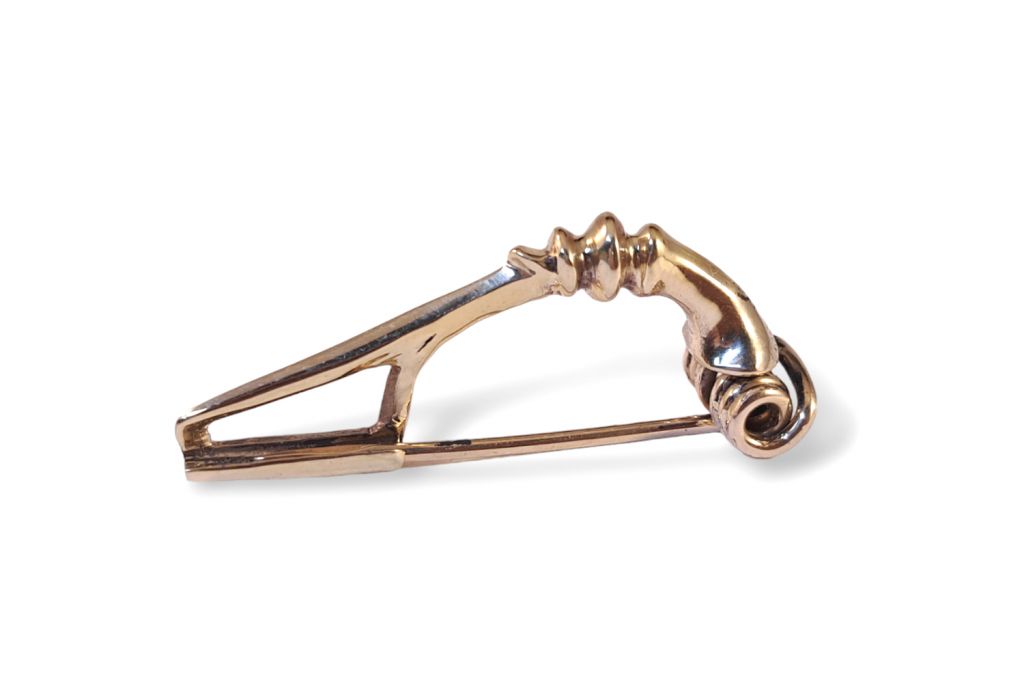Gallic Brooch Almgren 65, Bronze
In der Mitte des 1. Jahrhunderts vor unserer Zeitrechnung ist ein Wandel auch durch das Auftreten neuer Fibelformen gekennzeichnet. Die Fibel vom Typ Almgren 65 entsteht in dieser Zeit und wird je nach Forschungsmeinung in die Stufe D1b (Fischer 1988) oder D2a (Rieckhoff 2007) datiert.
Small Celtic brooch type Almgren 65
Our brooch is fully functional with spiral construction made from solid bronze. Length approx. 50 mm.
The last century before Christ is a time of upheaval in the Celtic world. While the Gallic tribes in the west were subjugated by Caesar, the last large Celtic settlements (oppida) such as Manching or Dünsberg disappeared in eastern Germany and Bohemia, probably under pressure from Germanic tribal organisations. The exact causes, processes and the precise point in time that marked the end of Central European Celtic culture are still the subject of archaeological and scientific research.
In the middle of the 1st century BC, a change is also characterised by the appearance of new fibula forms. The brooch of the type Almgren 65 dates to this period and, depending on the research opinion, is dated to stage D1b (Fischer 1988) or D2a (Rieckhoff 2007). It appears to be a few years older than the curved fibulae, as some examples still occur in the oppidum of Manching. The first half of the 1st century BC should be taken as the date for the appearance of this type of fibula, i.e. around 100 BC to 50 BC.
Finds of this type also come from military sites at the oppida in Gaul. At the time of Caesar, corresponding gold fibula sets were also used there as spoils or dona militaria in the Roman military.
| Delivery time | 3-4 weeks |
|---|---|
| weight | 0.030000 |
| size | 50 mm |
| Manufacturer | Replik-Shop * Markus Neidhardt * Brunnenstr. 13 * 61194 Niddatal * www.replik-shop.de * mail@replik.de |
| Era | Celts |
| Material | Bronze |
| Kind of replica | Fibulae and Brooches |
| scope of delivery | Delivery in a jewellery case with certificate |

